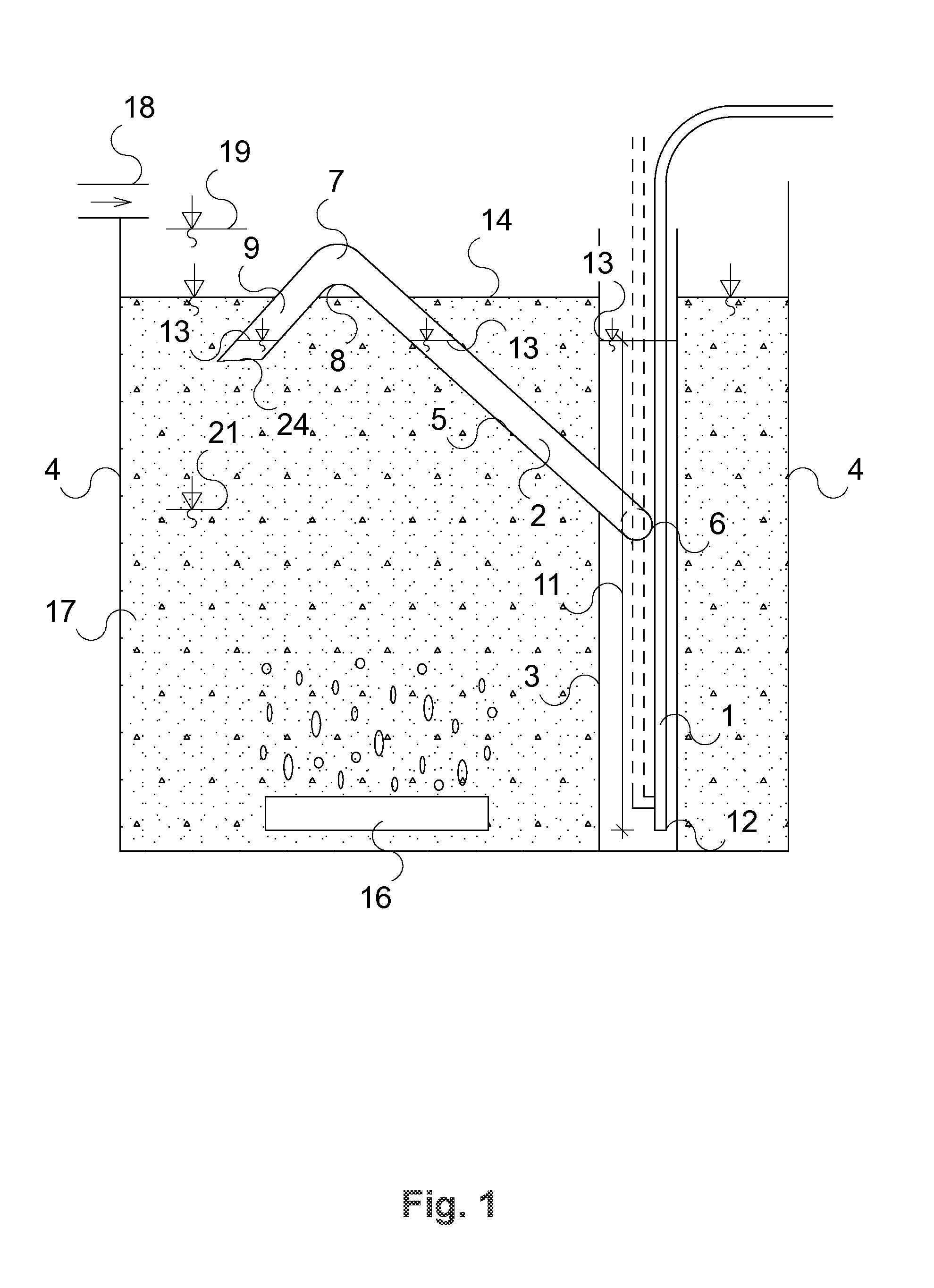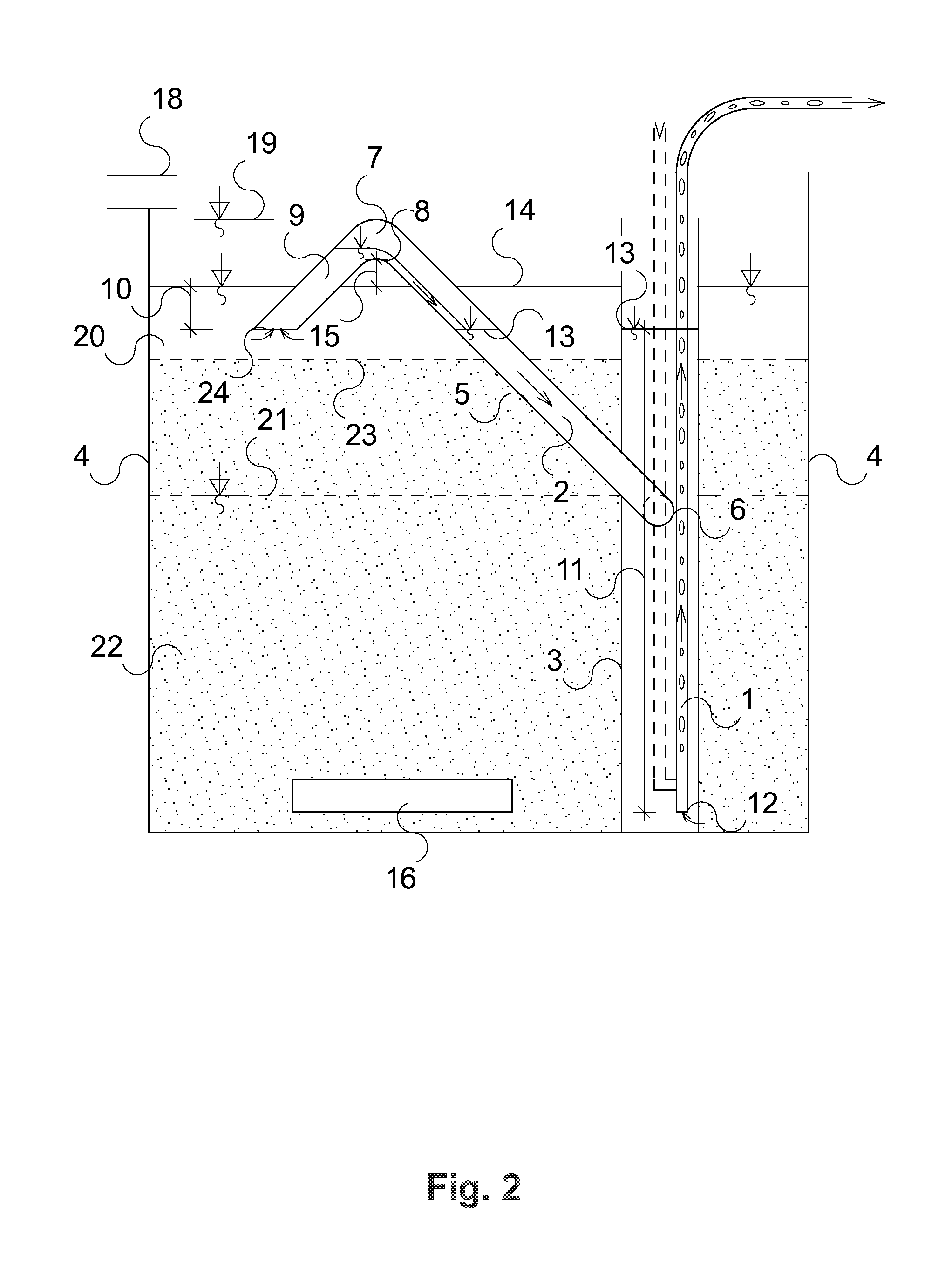Method of Wastewater Treatment and Apparatus for its Realization in Sequencing Batch Reactors
a batch reactor and wastewater treatment technology, applied in water/sludge/sewage treatment, biological water/sewage treatment, construction, etc., can solve problems such as head loss, achieve the effects of reducing water level, reducing hydraulic delivery of air-lift pump, and improving delivery yield
- Summary
- Abstract
- Description
- Claims
- Application Information
AI Technical Summary
Benefits of technology
Problems solved by technology
Method used
Image
Examples
Embodiment Construction
[0015]Based on the invention, the wastewater treatment plant consists of the reactor 4 with a gravitational or pressure inlet 18 of wastewater and the aerator 16. In one of the possible versions shown in FIGS. 1 and 2 the reactor 4 houses a decanting apparatus 2, consisting of an inlet pipe 9 with an inlet opening 24, a float component 7 and also a transport pipe 5, entering the tank 3 via flexible connection 6. The float component 7 can comprise for instance a pipe bend or an aired part of another shape. The flexible connection 6 can consist of a turning bend, a flexible pipe made of a soft material, etc. The tank 3 of the air-lift pump 1 is separated from the inside of the reactor 4 in a watertight way. The air-lift pump 1 has its inlet 12 advantageously located near the bottom of the tank 3. For the air-lift pump 1 to operate reliably its inlet 12 should not be placed above the minimum water level 21 in the reactor 4, reduced by half of the difference between the upper and lower ...
PUM
| Property | Measurement | Unit |
|---|---|---|
| depth | aaaaa | aaaaa |
| depth | aaaaa | aaaaa |
| flexible | aaaaa | aaaaa |
Abstract
Description
Claims
Application Information
 Login to View More
Login to View More - R&D
- Intellectual Property
- Life Sciences
- Materials
- Tech Scout
- Unparalleled Data Quality
- Higher Quality Content
- 60% Fewer Hallucinations
Browse by: Latest US Patents, China's latest patents, Technical Efficacy Thesaurus, Application Domain, Technology Topic, Popular Technical Reports.
© 2025 PatSnap. All rights reserved.Legal|Privacy policy|Modern Slavery Act Transparency Statement|Sitemap|About US| Contact US: help@patsnap.com



